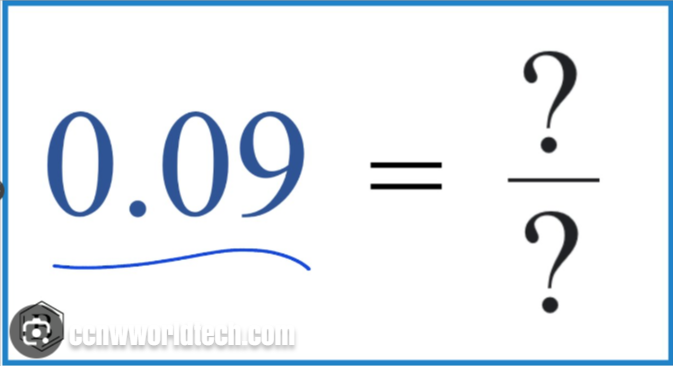Breaking down 0.09 as a Fraction: A Clear Explanation
Understanding decimals and their conversion into fractions is a fundamental skill in mathematics. In this article, we will delve into the world of decimals and explore how to express 0.09 as a fraction in its simplest form. By the end, you’ll have a clear grasp of the concept and the ability to convert other decimal numbers to fractions as well.
Decimal Basics:
Decimals are a way of representing parts of a whole. In the decimal system, numbers are divided into two parts: the whole number part (before the decimal point) and the decimal part (after the decimal point). For example, in the number 3.14, “3” is the whole number part, and “0.14” is the decimal part.
⇒Join us on Telegram for more Sure and Accurate football-winning tips every day...click here
Understanding Place Value:
To express a decimal as a fraction, we need to understand its place value. In 0.09, the “0” is in the tenths place, and the “9” is in the hundredths place. The place value of each digit to the right of the decimal point decreases by a power of 10. In this case, the “0” is 10 times smaller than the “9.”
Expressing 0.09 as a Fraction:
To convert 0.09 to a fraction, we can use the place value information we’ve just gathered. The “0” in the tenths place tells us that the number is less than 1 but greater than 0. The “09” in the hundredths place indicates that we have 9 parts out of 100.
So, we can express 0.09 as a fraction like this:
0.09 = 9/100
This is because the decimal “0.09” is equivalent to the fraction “9/100.” It’s a fraction where we have 9 parts out of a total of 100 parts.
Simplifying the Fraction:
In many cases, it’s a good practice to simplify the fraction to its simplest form. In the case of “9/100,” we can simplify it by finding the greatest common factor (GCF) of the numerator (9) and the denominator (100).
The GCF of 9 and 100 is 1. So, we can divide both the numerator and denominator by 1 to simplify the fraction further:
9/100 ÷ 1/1 = 9/100
In this case, the fraction “9/100” is already in its simplest form. There are no common factors other than 1 that can be used to simplify it further.
Conclusion:
Converting decimals to fractions is a valuable skill, and in the case of 0.09, we’ve successfully expressed it as “9/100.” Understanding place value and the relationship between decimals and fractions is essential for solving mathematical problems and working with real-world data. As you become more familiar with these concepts, you’ll find it easier to tackle a wide range of mathematical challenges.





